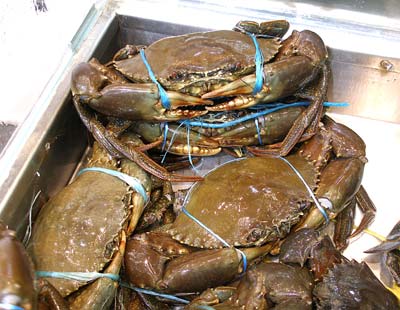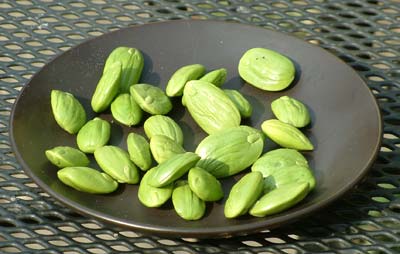
The mud crab or mangrove crab. A type of swimming crab found around the northern coasts of tropical Australia and making very good eating. It is found in the muddy bottoms around mangroves in estuaries and shallow bays. Only males are fished, usually using pots. They make very good eating indeed, although we found their musculature completely different from European crabs, with the meat not lifiting from the claws or from the carapace in a single succulent mouthful, but very flaky, requiring a great deal of thorough scraping to get at it. It is definitely worth the trouble as the flesh is remarkably sweet and well-flavoured. The colour of mud crabs will vary, as Denis Christie in Sydney Fish Market told me, depending on whether they have been caught in a sandy or muddy environments, those from mud being darker and greener. They are kept bound up when sold live, as they most frequently are, to prevent injury to other crabs. This crab, like so many others, has in the past been known as the black, brown of green crab, as well as the giant mud crab and, in error, the orange mud crab. When asked if he was going anywhere for his holidays, Stewart, one of the guides at the Bloomfield Lodge in Weary Bay in Northern Queensland replied that he was just going to stay put and fish a few mud crabs. A happy man.

Large bright green, bean-like seeds. In Thailand these would usually be found still in their very large, heavy pod but are generally removed for export. They have a texture rather like very fresh almonds and a strong, garlicky flavour. They are eaten raw or cooked whole and used in sambals. Elsewhere in South East Asia these are called pdai. Could you send details (and a picture) to queries@whatamieating.com if you know more?